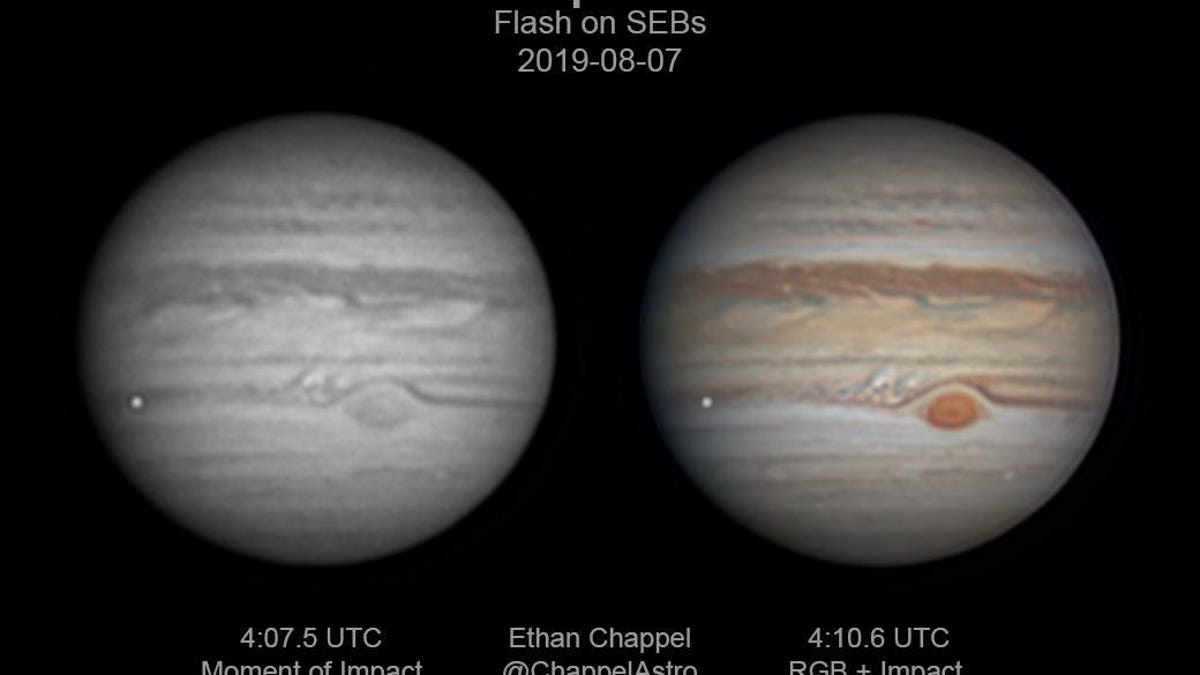A small asteroid makes a huge flash slamming into Jupiter
An explosion that appeared to be the size of a planet comes from a surprisingly small space rock.

The apparent moment of impact on the solar system's largest world.
An amateur astronomer captured a flash in Jupiter's atmosphere last month that appeared as a bright dot nearly the size of Earth when compared with the gas giant planet. New analysis of the footage finds the brief flare was caused by a relatively small asteroid.
A slow-motion GIF of the flash brightening and fading in the middle left of the planet.
Ethan Chappel recorded the 1.5-second flash on August 7 using a telescope in his backyard in Texas. At its peak, it matched the brightness of Jupiter's moon Io.
Ramanakumar Sankar and Csaba Palotai of the Florida Institute of Technology (FIT) analyzed the data to estimate that the flash could have been caused by an impact from a stony-iron asteroid between 39 and 52 feet (12 and 16 meters) in diameter, or about the size of a large bus. The object probably had a mass of about 450 tons and released the equivalent of an explosion of 240 kilotons of TNT when it smashed into the upper atmosphere of Jupiter around 50 miles (80 km) above the planet's clouds.
That's about half the energy released by the bolide that exploded over Russia as it broke apart in the atmosphere in 2013, unleashing a shock wave that shattered thousands of windows in the city of Chelyabinsk.
These new results were presented Monday at a meeting of the European Planetary Society Congress in Geneva.
Ricardo Hueso, a physicist at the University of the Basque Country in Spain, is one of the developers of an open source software package called DeTeCt specially designed to identify impacts on Jupiter. Chappel used DeTeCt to analyze his video of the August impact. Hueso said that the impact appears to be the second brightest of the six captured since 2010.
"Most of these objects hit Jupiter without being spotted by observers on Earth," Hueso said. "However, we now estimate 20 to 60 similar objects impact with Jupiter each year."
If that's the case, that's an awful lot of light shows that no one is witnessing, including a few that may be even brighter than the planet-sized flash we saw last month.

